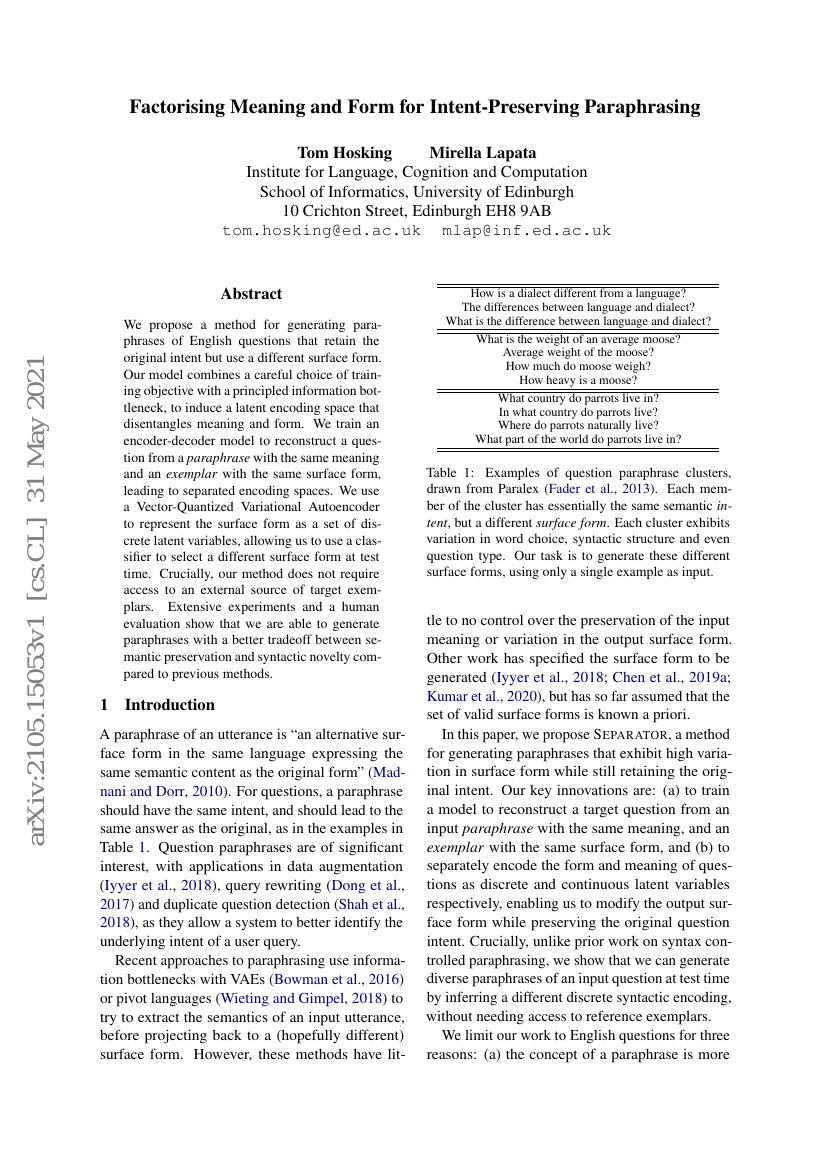Command Palette
Search for a command to run...
Tom Hosking Mirella Lapata

Abstract
We propose a method for generating paraphrases of English questions that retain the original intent but use a different surface form. Our model combines a careful choice of training objective with a principled information bottleneck, to induce a latent encoding space that disentangles meaning and form. We train an encoder-decoder model to reconstruct a question from a paraphrase with the same meaning and an exemplar with the same surface form, leading to separated encoding spaces. We use a Vector-Quantized Variational Autoencoder to represent the surface form as a set of discrete latent variables, allowing us to use a classifier to select a different surface form at test time. Crucially, our method does not require access to an external source of target exemplars. Extensive experiments and a human evaluation show that we are able to generate paraphrases with a better tradeoff between semantic preservation and syntactic novelty compared to previous methods.
Code Repositories
Benchmarks
| Benchmark | Methodology | Metrics |
|---|---|---|
| paraphrase-generation-on-paralex | Separator | iBLEU: 14.84 |
| paraphrase-generation-on-quora-question-pairs-1 | Separator | iBLEU: 5.84 |
Build AI with AI
From idea to launch — accelerate your AI development with free AI co-coding, out-of-the-box environment and best price of GPUs.